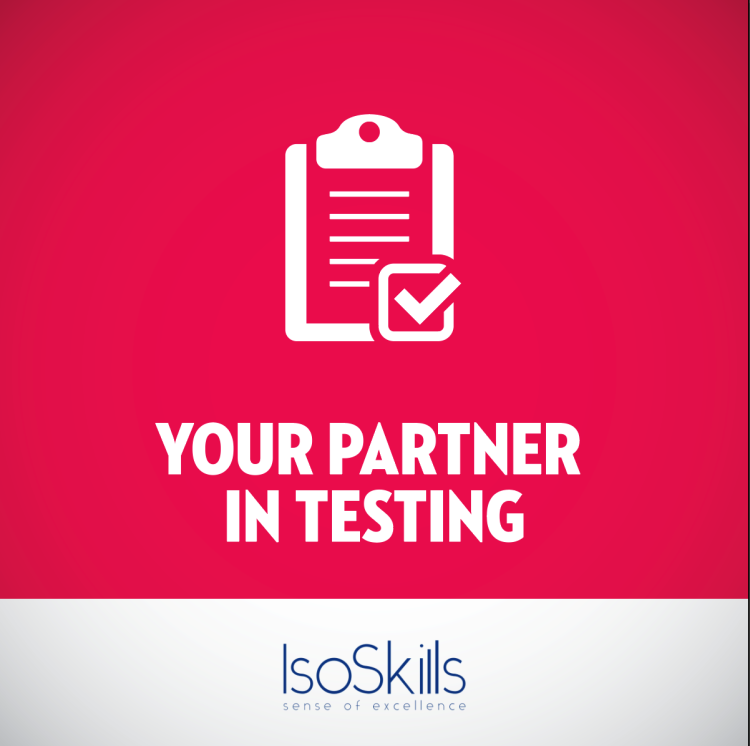Revolutionizing Software Testing with Automation: Why, When, and How

![]() In the world of software development, testing plays an essential role in ensuring the quality, reliability, and functionality of software applications. Traditionally, quality assurance heavily leaned on manual effort, however, there is a game-changing shift happening. Test automation is ushering in an era of heightened efficiency, precision, and scalability.
In the world of software development, testing plays an essential role in ensuring the quality, reliability, and functionality of software applications. Traditionally, quality assurance heavily leaned on manual effort, however, there is a game-changing shift happening. Test automation is ushering in an era of heightened efficiency, precision, and scalability.
A recent report by Capgemini uncovers an eye-catching fact: the test automation market is on a rapid ascent, expected to reach a whopping $35.69 billion by 2028. This trend underscores the growing recognition among companies of the pivotal role automation plays in efficient and effective testing.
This article delves into the benefits, hurdles, and best practices that make test automation indispensable in modern software development. Discover why incorporating automation in testing is a must, learn when the right time to start is, and explore effective strategies for successful implementation. Additionally, we'll discuss common obstacles that arise in automation and the future of test automation.
Why Test Automation Matters
Efficiency and Consistency: Manual testing can be slow, labor-intensive, and prone to errors. Automated tests run quickly and tirelessly, saving time and reducing the risk of mistakes. They ensure consistent test execution, eliminating variability and improving reliability.
Early Defect Detection: Automation catches issues early in development by integrating with continuous integration processes. This means problems are spotted as soon as they're introduced, making them easier and cheaper to fix.
Improved Test Coverage: Automation allows you to run a large number of test cases in a short time, providing more comprehensive test coverage, even for challenging edge cases.
Cost-Efficiency: While setting up test automation involves an initial investment, it can save money in the long run. Automated tests can run 24/7 without the need for human intervention, reducing labor costs associated with manual testing.
Scalability: As software complexity grows, so does the number of test cases required. Test automation easily scales to handle a large number of test cases without a proportional increase in effort.
Parallel Testing: Automation enables you to run tests in parallel on different configurations and platforms, efficiently identifying compatibility issues.
Speeding Up Regression Testing: Automation excels at verifying that everything still works as expected after code modifications, a critical aspect of regression testing.
Performance Testing: Tools for performance and load testing are often automated, simulating a large number of users to evaluate application performance under stress.
When to Implement Test Automation
Before applying test automation, there are several factors to be assessed to determine whether it is the right choice for your project.
Project Maturity: Test automation is most effective in stable or mature projects. It may not be suitable for rapidly changing early-stage projects.
Project Time and Budget: Assess if the investment aligns with project schedules and costs. Long-term projects may see significant ROI, but for short-term projects, manual testing might suffice.
Resource Availability: Ensure you have skilled team members and the right tools for successful automation. Consider training or hiring specialists if needed.
Test Coverage and Frequency: Automation is valuable for repetitive test cases executed frequently. It can reduce manual testing overhead and speed up the release process.
Continuous Integration and Deployment (CI/CD): Test automation is crucial in CI/CD workflows, where frequent testing is necessary to maintain quality with every code change.
How to Implement Test Automation
Successful test automation requires a well-thought-out strategy and the right tools.
Choosing the Right Tools and Frameworks: Select tools based on your project's specific needs and your team's expertise. Consider the application type, technology stack, and testing goals.
Test Script Design: Keep test scripts small, modular, and well-named. Organize them logically and minimize dependencies to prevent cascading failures.
Test Data Management: Isolate test data, use data generators, and store data centrally to ensure reliable and repeatable test data.
Test Environment Setup: Emulate production environments to obtain authentic results. Monitor configurations, use virtualization or containerization, and integrate with CI/CD pipelines.
Overcoming Common Challenges
While test automation offers numerous advantages, it also presents its fair share of challenges
Test Maintenance: One classic headache is keeping your tests up to date when the software changes. The app's UI or features might evolve, rendering your tests useless. To deal with this:
· Make it a habit to review and tweak your test scripts regularly to match the latest app version.
· Keep your test scripts in a version control tool, treating them like gold – this helps you track changes and roll back if needed.
· Try to separate UI changes from your tests using page object models or abstraction layers to ease maintenance.
Test Flakiness: Flaky tests are the worst – inconsistent results, timing issues, you name it. To fix this:
· Set up smart waiting strategies so your tests patiently wait for stuff to appear.
· Identify and control external dependencies (like network issues) to make your test results reliable.
· Retest the failures automatically to sniff out those intermittent issues.
Selecting the Right Test Cases: Not all tests should be automated. Picking the wrong ones can cost you time and money. To choose wisely:
· Go for repeatable and essential test cases, especially those in the regression set.
· Steer clear of tests that change often and don't give a good ROI in manual testing.
· Use tools that help identify the best candidates for automation.
Test Data Management: Your automation's only as good as the data it uses. Messy data equals unreliable results. To solve this:
· Create clean, consistent test datasets that you can update in a jiffy.
· Try data-driven testing to keep your test data separate and easy to modify.
· Get cozy with data provisioning and mocking tools for better data management.
Handling Test Environments: Your tests need a real-world environment to shine. To deal with environment issues:
· Get all techy with containerization like Docker for reproducible test setups.
· Embrace Infrastructure as Code (IaC) to automate your environment setup.
· If you need speed and scalability, take it to the cloud for a virtual test playground.
Collaboration and Communication: Testing teams have to interact well with developers to make test automation achievable. Here's how:
· Promote teamwork and shared responsibility.
· Talk regularly and use collaboration tools to keep everyone in the loop.
· Train and motivate developers to jump on the test automation bandwagon.
Skill and Knowledge Gaps: Using test automation needs certain proficiencies. Bridge the gaps by:
· Investing in training for your testing and development crew.
· Encourage knowledge sharing among your team.
· Don't hesitate to bring in automation experts when needed.
The Future of Test Automation
Test automation, like every other aspect in the software development world, is also a moving target. With the advancement of technology, new trends and techniques develop which define the future of automatic testing.
AI-Driven Testing: Artificial intelligence and machine learning are changing the testing game. They can auto-generate test scenarios, find defects, and even fix test scripts – saving time and money.
Continuous Testing: This is the norm in DevOps and Agile now. Test early, test often, and avoid nasty surprises.
Shift-Left Testing: Move testing earlier in the development cycle to catch and fix errors ASAP.
Cloud-Based Testing: Quickly set up and scale test environments in the cloud. Test in different conditions hassle-free.
Serverless Testing: More scalability and cost-efficiency with serverless computing. Run tests in parallel without breaking a sweat.
IoT Testing: With more IoT devices, we need more testing. Validate communication, usability, efficiency, and cybersecurity of all those connected gadgets.
To sum it up, test automation plays a crucial role in today's software engineering, boosting the strength and trustworthiness of software. Regardless of whether you're an experienced developer or new to testing, it's time to embrace test automation as a core element for top-notch software. This article's goal is to offer you some insights and motivation to get started on this game-changing journey.
IsoSkills is the go-to company for organizations seeking professional IT software development, testing, and management services. We are helping various companies implement and scale their projects with our specialists, or develop their visions into viable software solutions and services.
Growing our services in the Nordics, IsoSkills has built the reputation of leveraging new technologies and methodologies, while engaging talent for our clients efficiently and effectively. We deliver excellence from our main office in Finland and our development center in Romania, being a trusted partner for dozens of global and local organizations.
This article was written by IsoSkills Test Automation Specialist.
More info, please contact: Business Development & Sourcing Director Jaana Väänänen, tel. +358505253693 or jaana.vaananen@isoskills.fi





















































